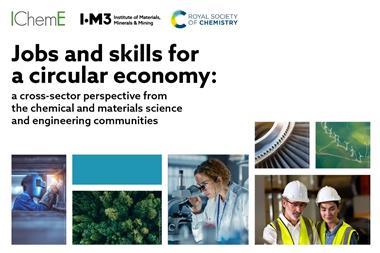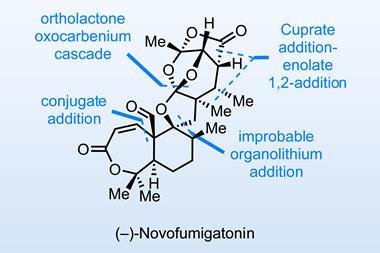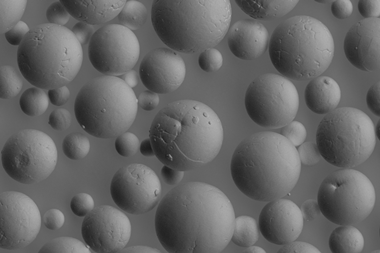I read with interest and some trepidation your recent article on UK copyright laws (Chemistry World, July 2011, p11). The Digital Opportunity report mentioned in the article recommends that the UK Government introduces an exception to its copyright law to allow text and data mining of copyright works for non-commercial purposes and promotes a change to EU copyright law to permit their use commercially. A recently published (25 May 2011) communication from the European Commission entitled ’A single market for intellectual property rights’ COM(2011)287 discusses a number of proposed changes to EU IP law including action on orphan works but does not appear to contemplate changes to the exceptions to permit text and data mining.
The RSC is fortunate in being able to understand the significance of the recommendations in the Digital Opportunity report. The RSC is both a publisher of journals and representative of the users of those journals. The benefits of text and data mining to research and innovation are clear but a way must be found to permit their use without damaging the business models of the journal publishers and making the data even less accessible. It would be valuable to know how the RSC would be affected if the exceptions were introduced.
The likelihood of rapid change in EU copyright law to permit commercial data and text mining is very small and I am not convinced that we can afford to wait for the freedoms it would bring. I therefore hope that there could be dialogue between journal publishers and the miners to find a way forward in the near future.
R J Burt MRSC
European and Chartered Patent AttorneyBy email
Having read the article ’Shale gas gets UK go ahead’ (Chemistry World, July 2011, p18), I am a little concerned at the perspective it gives on hydraulic fracturing (fracking) of reservoirs. This process has not come into being as a result of the availability of shale gas. Quite the contrary! There was a hydraulic fracture operation at the Beryl Field in the North Sea in 1989, and over time since then it has been practised widely at conventional oil and gas fields. So if the difficulty to which the author of the piece refers is with hydraulic fracture per se it is better for this not to be exclusively associated with shale gas in people’s minds.
J C Jones FRSC
Aberdeen, UK
Following on from Andrea Sella’s letter last month (Chemistry World, July 2011, p37), there is also the children’s rhyme describing a classical inorganic reaction:
Albert thinking life a bore
Drank some H2 SO4.
Mother, knowing chemistry
Gave him MgCO3.
Now he’s neutralised, it’s true
But he’s full of CO2.
N N Greenwood FRS FRSC
Leeds, UK
David Jones in his Last retort on chemical words (Chemistry World, June 2011, p72) deplores the lack of chemical poetry, and in support I recall that the editor of the May & Baker Laboratory Bulletin 1959 was underwhelmed by the response to the limerick competition, despite of, or because of the dubiety of the example given:
There was a young chemist of Ryde
Who made a foul poison
and died
It was orthohydroxy
Paramethoxy
Trinitrobenzaldehyde
How do I know? Because, dear reader, I was - er - Bombalurina (as cited in Jones’ article. The name Bombalurina comes from TS Elliot’s Naming of cats)
H Cottrell CChem FRSC
London, UK
From Alan Crooks
I was interested to read David Jones noting that ’many students of chemistry have to master a double vocabulary - the modern systematic one and the traditional names’. However, this is nothing new. I studied A- level chemistry in 1972/3 when Iupac nomenclature was coming into vogue. My lecturer was an absolute stickler and insisted that all organic compounds, including the homologous series headings were given their correct Iupac names, whereas we should also be aware of their non-systematic and even ’trivial’ names. Hence we had to refer to alkanols (alcohols), alkanals (aldehydes), alkanones (ketones), alkoxyalkanes (ethers), alkyl alkanoates (esters) etc. Imagine my consternation, years later (2006) when I started teaching Salters A-level chemistry, that the specification used a mixture of traditional names and systematic. In particular, the specific chemicals were named systematically (for example, ethoxyethane), whereas the homologous series were still named traditionally (for example, ethers).
Jones also writes that ’a systematic name generally gives useful information about the molecular structure of the stuff being named’. I still remember with amusement my lecturer’s comment about this: ’Take capric, caprylic and caproic acids. One would think from their names that they had some structure in common. Not a bit of it. They have these names because they all have the smell of a goat’! (Latin: Caper).
One example of the traditional names being more informative than systematic ones is the paraffin hydrocarbons (nowadays known as alkanes). I am frequently explaining to my students that they were formerly known as the ’paraffins’ from the Latin, parum affinum, meaning ’little reactivity’.
A Crooks CChem FRSC
Salisbury, Wiltshire
From John Steggles
David Jones’s article brought back many memories to this aged chemist. In 1952, I worked for the Association of British Chemical Manufacturers, the forerunner of the CIA, and was part of a team considering the British Standard ’Recommended names for chemicals used in industry’.
We were led by a director of A Boake Roberts & Co, and included a man from the Laboratory of the Government Chemist as well as the late Robert Cahn of the Chemical Society (it was long before the RIC amalgamated with it.) Cahn argued that the whole idea was premature as Iupac was about to publish an important work on the subject. In 1953 I met a very senior research director at ICI Dyestuffs Division who insisted that there was only one way to list chemicals - by formula. Imagine the army of people working with chemicals who had little knowledge of chemistry as a subject.
I remember that everyone then was urged to list groups in alphabetical order; thus, ethyl methyl ketone, not the other way round. I’m willing to bet that today people still say MEK. I also remember that my first book of qualitative inorganic chemistry, by Newth, wrote the CN radical Cy. That must have dated from 1930 or earlier.
J Steggles FRSC
By email
When I read Robert Bowles piece on choosing a chemistry degree (Chemistry World, June 2011, p64) I immediately thought about a statutory warning that appears on advertisements for products like unit trusts. This warning runs ’Past performance is no guide to future performance’.
Market forces always work so that if the demand for a commodity exceeds the supply then the price rises, a situation that existed for many years for university graduates. If the supply increases faster than demand the price falls, a situation that I suspect exists for university degrees.
While it is easy to link the superior average income of chemistry graduates to their chemistry degrees it is also possible that these individuals with their inherent abilities could have done as well or better without a chemistry degree. Of course the chemists in the survey not only had the advantage of being a graduate, they did not have any accumulated debt, they only lost three years salary.
Assumptions about the continued increase in graduate numbers depend on students being willing to run up large amounts of debt to obtain a university degree. This could be in error; traditionally, respectable working class people have had a fear of debt. If the thought of ?9000-a-year fees reduces the number of students then of course the value of a degree will start to rise. This will probably be satisfactory for those who have paid school fees to ensure their offspring attend their chosen university. If the number of students attending university falls significantly then the economic plan that is based on recovering the cost of rescuing banks by charging future students will probably fail.
Career averages are just averages and I suspect that those chemists who are made redundant in their 50s, for example in cut backs in the pharmaceutical industry, will find that their career average will be reduced since they will be unlikely to obtain similar well paid employment.
The comparison between chemists and the general population is a comparison between graduates and the largely unqualified. It would be interesting to see how this compares with the value of non-graduate qualifications. I can remember when I was in the sixth form most of my friends wanted to be scientists or engineers, but one boy wanted to be a plumber. I wonder how his income compares with the rest of us.
W P Edwards CChem CSci FRSC
Great Barfield, Essex
We have put a copy of The case of the sulphuric acid plant - an educational film featuring John Cleese that we asked readers to track down last year (Chemistry World, October 2010, p35) - to YouTube.
Many thanks to Eton College for providing the digital version and Akzo Nobel for giving the RSC permission to make the film available (thanks to Wendy Warr for facilitating that bit!).
M Fox MSRC , Commissioning editor
RSC Publishing
The Gordon F Kirkbright bursary award is a prestigious annual award that enables a promising student or non-tenured young scientist of any nation to attend a recognised scientific meeting or visit a place of learning.
The fund for this bursary was established in 1985 as a memorial to Gordon Kirkbright in recognition of his contributions to analytical spectroscopy and to science in general. Although the fund is administered by the Association of British Spectroscopists (ABS) Trust, the award is not restricted to spectroscopists.
Applications are invited for the 2012 Gordon Kirkbright Bursary.
For further information contact John Chalmers at vibspecconsult@aol.com
The closing date for entries is 31 December 2011.
J Chalmers
By email












No comments yet